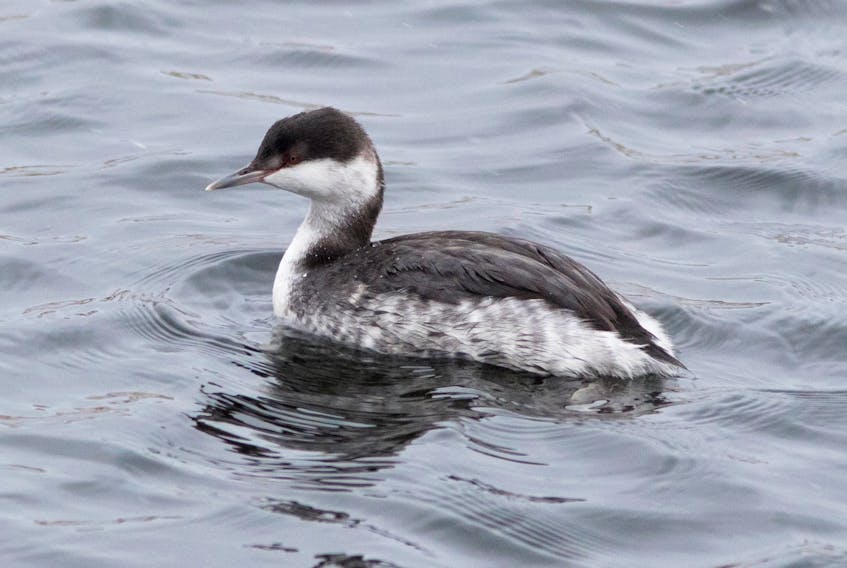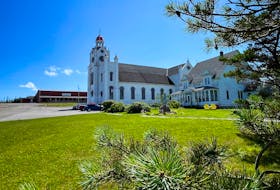There were three Christmas Bird Counts conducted on the Avalon Peninsula over the Christmas holiday period. They were the St. John’s, Ferryland and Cape Race Christmas bird counts.
These counts have been run annually for decades. Over time you learn a few things about the birds in late December at these locations. Each count is like a meter taking a reading on the current abundance of the birds. The counts are far from scientific but they do give realistic impressions.
By definition a Christmas Bird Count area is a 7.5-mile (12 km) radius around a fixed spot. This is a large area. The Ferryland Christmas bird count circle for example takes in places like Cape Broyle and Renews. A small army of dedicated bird watchers can cover only a small portion of the Christmas count circle on a single day, but typically the richest areas for birds are targeted.
Weather plays a big role in the number of birds that are found. The St. John’s count was held on Dec. 26. This was a very windy day with west winds gusting over 100 km/hr. This had a serious effect on the ability to find birds. Only 11 blue jays and three song sparrows were recorded on count day.
They kept such a low profile to hide from wind it made them difficult for us to find. In high winds it is often best for birds to sit it out rather than fight it. Even gulls were seen in very low numbers because they were hunkered down in the calmer water in difficult-to-access locations on the lee side of coastal cliffs.
Weather plays a big role in the number of birds that are found. The St. John’s count was held on Dec. 26. This was a very windy day with west winds gusting over 100 km/hr. This had a serious effect on the ability to find birds. Only 11 blue jays and three song sparrows were recorded on count day.
Despite the harsh weather there were some highlights. The St. John’s city ponds are an oasis for ducks. A rare gadwall was at Quidi Vidi Lake and the long-staying wood duck was seen at Bowring Park.
Wigeons continue to increase with totals of 14 Eurasian and 37 American wigeon being high counts. St. John’s is famous for its high numbers of tufted ducks. The 77 counted is an exceptional number for anywhere in North America.
The comical little pied-billed grebe was back for its second winter in Quidi Vidi Lake at the Virginia River inflow. A handful of American coots were present for the count. The total of 17 bald eagles included 11 in sight at one time at the Robin Hood Landfill.
A member of the shorebird family called the killdeer found in a wet area at the landfill was the rarest discovery of the day. The windy weather resulted in a below recent average total of 63 species found on count day but as always was the leader for all provincial Christmas Bird Counts
The Ferryland Christmas bird count never quite manages to get as many species as St. John’s, but it does well on surprises. There had been a number of interesting birds in the area in December but most of them migrated before the count date of 30 December. Three bufflehead and a hooded merganser were a surprise in Renews harbour. As was a horned grebe sheltering by the government wharf, which provided exceptional close views. It was a first for this Christmas count.
A northern harrier hunting along the shoreline at Renews was a rare winter record of this species. A peregrine falcon was a nice sight in Ferryland. An American tree sparrow was a nice find with a handful of juncos feeding in roadside alders. Observers watching out to sea recorded good totals of 1288 common eiders and 733 dovekies.
Despite the harsh weather there were some highlights. The St. John’s city ponds are an oasis for ducks. A rare gadwall was at Quidi Vidi Lake and the long-staying wood duck was seen at Bowring Park
The Cape Race Christmas count was held on Dec. 23 with 45 species found. Sea ducks come in strong on this largely ocean-based count with nice totals of 1,601 common eiders, 310 long-tailed ducks, and 162 white-winged scoters tallied. There was were good counts of six willow ptarmigan, 140 snow buntings, 43 common loons, 210 purple sandpipers, three sanderlings and five snowy owls. Yes, that is five snowy owls. Cape Race is the best place on the Avalon Peninsula to see a snowy owl. A beautiful hoary redpoll was real surprise in the western boundary of the count circle at Biscay Bay.
What can we take from the overall results from these three counts? Juncos are scarce but so are bird feeders. Very few bird feeders we saw contained seed. However, some traditional bird feeders such as Clara Dunne’s well-stocked feeders in Renews were devoid of birds. It was very unusual not to see a single junco or goldfinch there. But this is all for a positive reason. It is the abundance wild seed in the woods. The juncos, goldfinches and other birds are ranging freely in the woods far from the comfort of the bird feeder.
The road into the depth of winter ahead with the cold and snow will bring birds back to the feeders with a little time.
Bruce Mactavish is an environmental consultant and avid birdwatcher. He can be reached at [email protected]









